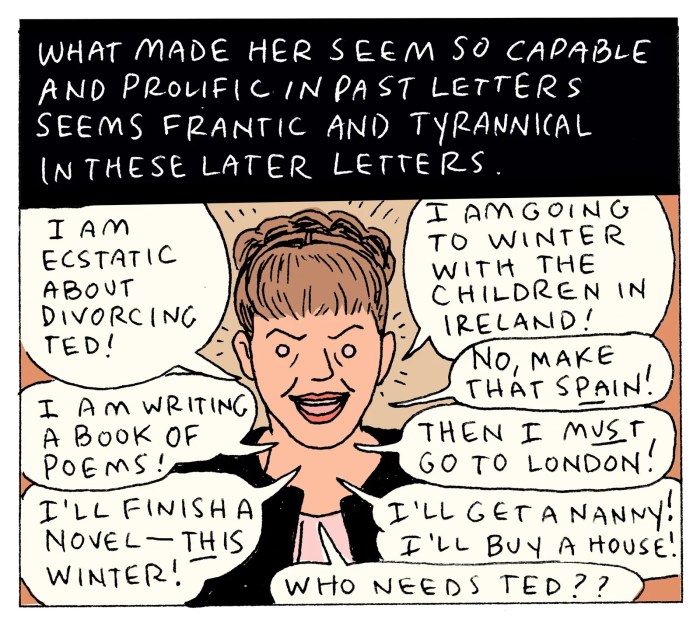Themes of sylvia plath poetry – Prepare to delve into the captivating world of Sylvia Plath’s poetry, where themes of death, female identity, nature’s mirror, language’s power, and stylistic innovation intertwine. As we explore her poignant verses, we’ll unravel the depths of her psyche and gain a profound understanding of her literary brilliance.
From the haunting presence of death to the complexities of female identity, Plath’s poetry mirrors the raw emotions and experiences that shape the human condition. Join us on this literary journey as we uncover the profound themes that resonate within her unforgettable words.
Exploring Themes of Death and Suicide
Sylvia Plath’s poetry is profoundly marked by the themes of death and suicide, which permeate her work with an almost obsessive intensity. These themes are not merely abstract concepts for Plath but deeply personal and visceral experiences that she grappled with throughout her life.
Prevalence and Significance
Death and suicide are prevalent motifs in Plath’s poetry, appearing in numerous poems and often intertwined with other themes such as love, loss, and mental illness. These themes reflect Plath’s own struggles with depression, suicidal ideation, and the loss of her father at a young age.
Examples and Emotional Impact
One of the most iconic examples of Plath’s exploration of death and suicide is the poem “Daddy,” in which she confronts the complex and ambivalent feelings she harbored towards her deceased father. The poem is a powerful and unflinching depiction of grief, anger, and the desire for revenge.Another
notable example is the poem “Lady Lazarus,” in which Plath explores the themes of death and rebirth through the metaphor of the phoenix. The poem conveys a sense of despair and self-destruction but also a longing for liberation and transformation.
Influencing Factors
The factors that influenced Plath’s preoccupation with death and suicide are complex and multifaceted. They include her personal experiences with loss, her struggles with mental illness, and the societal pressures she faced as a woman and an artist. Plath’s work also reflects the broader cultural and historical context of the mid-20th century, which was marked by existential angst and a sense of disillusionment.
Unveiling Female Identity and Gender Roles

Sylvia Plath’s poetry delves into the complexities of female identity and the societal expectations that shape it. Her poems challenge traditional gender roles, giving voice to the struggles and triumphs of women in a patriarchal society.
Challenging Gender Norms
Plath’s poetry often subverts traditional gender norms. In “Daddy,” she explores the complexities of her relationship with her father, using imagery of violence and domination to express her anger at societal expectations for women. Similarly, “Lady Lazarus” depicts a woman who refuses to conform to societal norms, embracing her own strength and resilience.
Female Empowerment
Despite the challenges faced by women in Plath’s poetry, there is also a sense of female empowerment. In “Ariel,” the speaker transforms into a powerful, mythical creature, symbolizing the strength and resilience of women. Other poems, such as “Elm” and “Medusa,” explore the power of female sexuality and the ways in which women can reclaim their own bodies and identities.
Themes of Sylvia Plath’s poetry, such as death and mental illness, are often explored through her use of imagery and symbolism. If you’re studying algebra 2, you might find this algebra 2 pre-test answer key helpful for your upcoming test.
Returning to Plath’s work, her poems often convey a sense of isolation and despair, reflecting her own struggles with mental health.
Struggles and Triumphs
Plath’s poetry captures the struggles and triumphs of women in a patriarchal society. In “Daddy,” the speaker grapples with the trauma of her father’s absence, while in “Lady Lazarus,” she confronts her own suicidal impulses. However, Plath’s poems also offer moments of hope and resilience, as in “Ariel,” where the speaker finds solace and strength in her connection to nature.
Nature as a Mirror of the Psyche

Sylvia Plath’s poetry is renowned for its vivid and evocative use of nature imagery, which often serves as a mirror reflecting the emotional landscapes of her characters. Through her portrayal of natural elements, Plath explores themes of inner turmoil, loss, and resilience, revealing the intricate connection between the human psyche and the natural world.
Organic and Natural Imagery, Themes of sylvia plath poetry
Plath’s use of organic and natural imagery is particularly significant in conveying psychological experiences. She employs plant life, animals, and natural phenomena to symbolize inner states, often drawing parallels between the fragility and vulnerability of the natural world and the human condition.
- In “The Tulip,” the speaker’s sense of isolation and longing is reflected in the image of a single tulip, “a red tongue / that thrusts from the dark / unspeaking earth.”
- In “Daddy,” the speaker’s complex relationship with her father is symbolized through the image of a black shoe, “A shoe in a glass case / A shoe on a black tree.”
- In “Lady Lazarus,” the speaker’s resilience and defiance in the face of adversity are conveyed through the image of a phoenix rising from the ashes.
By using nature as a mirror of the psyche, Plath creates a profound connection between the inner and outer worlds, revealing the ways in which the natural world can both reflect and shape our emotional experiences.
The Power of Language and Confession

Sylvia Plath’s poetry is renowned for its raw and confessional nature, delving into the depths of her personal experiences, traumas, and emotions. This confessional approach creates a sense of intimacy and vulnerability between the reader and the poet, challenging traditional notions of privacy and self-expression.
The Impact of Raw and Personal Language
Plath’s use of unfiltered and deeply personal language creates a sense of authenticity and immediacy. Her words resonate with readers on a profound level, evoking empathy and understanding. The rawness of her emotions, expressed through vivid imagery and symbolism, allows readers to connect with her experiences on a deeply human level.
Challenging Traditional Notions of Privacy
By sharing her most intimate thoughts and feelings through her poetry, Plath challenged the societal norms of privacy and self-restraint. Her work pushed the boundaries of what was considered acceptable to express publicly, opening up a space for other poets and writers to explore their own vulnerabilities.
Confession as a Form of Catharsis
For Plath, the act of writing poetry served as a form of catharsis, allowing her to process her pain and trauma. Through her confessional verse, she found a way to give voice to her inner turmoil and to seek solace and understanding.
Formal and Stylistic Innovations: Themes Of Sylvia Plath Poetry

Sylvia Plath was a groundbreaking poet who revolutionized the landscape of 20th-century poetry. Her unique and innovative techniques challenged conventions and created a distinctive and memorable voice. Plath’s experimentation with form and style significantly contributed to the impact and meaning of her work.
Rhythm and Rhyme
Plath’s mastery of rhythm and rhyme was evident in her use of irregular meters and unconventional rhyme schemes. She frequently employed off-beat rhythms and syncopated cadences to create a sense of tension and unease. Her use of slant rhyme, near-rhyme, and internal rhyme added depth and complexity to her work, creating unexpected and often jarring effects.
Imagery
Plath’s imagery was both vivid and visceral, often drawing upon elements of nature, the body, and the subconscious. She used imagery to evoke powerful emotions and create a sense of immediacy. Her imagery is often violent, disturbing, and sexually charged, reflecting her exploration of dark and painful themes.
Form
Plath experimented with various poetic forms, including the sonnet, the villanelle, and the free verse poem. She often subverted traditional forms, breaking away from established patterns and structures. Her use of fragmented lines, abrupt shifts in perspective, and unconventional stanzas created a sense of chaos and disorientation that mirrored the emotional turmoil she explored.
General Inquiries
What is the significance of death in Sylvia Plath’s poetry?
Death is a pervasive theme in Plath’s poetry, reflecting her own struggles with depression and suicide. Her poems explore the complexities of grief, loss, and the desire for oblivion.
How does Plath challenge traditional gender roles in her poetry?
Plath’s poetry confronts societal expectations of women, expressing female empowerment and challenging patriarchal norms. She portrays women as complex, multifaceted individuals with desires and aspirations beyond traditional roles.
What is the role of nature in Plath’s poetry?
Plath uses nature imagery to symbolize her inner turmoil, loss, and resilience. The natural world becomes a mirror of her emotions, reflecting her psychological experiences and offering solace.